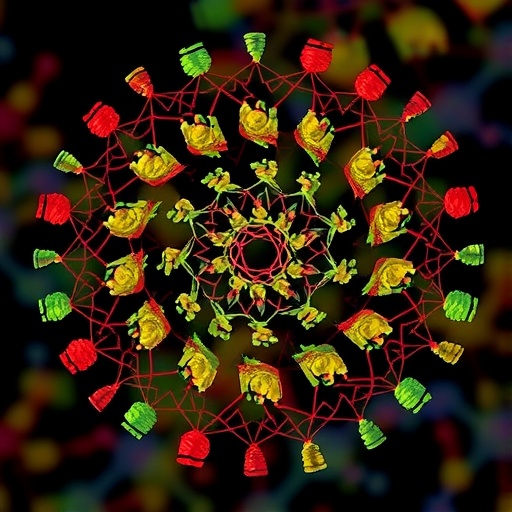In the rapidly evolving landscape of analytical chemistry and bioinformatics, the integration of artificial intelligence continues to push the boundaries of what is possible in molecular identification and characterization. A groundbreaking study recently published in Nature Biotechnology by Willem Bittremieux and William S. Noble introduces a revolutionary approach that leverages self-supervised learning to interpret small-molecule mass spectrometry data. This novel method promises to significantly enhance the accuracy and efficiency of molecular identification, potentially transforming fields ranging from drug discovery to metabolomics.
Mass spectrometry has long been a cornerstone technique for analyzing complex mixtures of small molecules, providing critical insights into their masses and structures. Despite its utility, one of the persistent challenges lies in decoding the spectral data to accurately identify compounds, especially when faced with vast chemical diversity and limited reference data. Traditional supervised machine learning models have relied heavily on large, annotated datasets, which are often costly and time-consuming to generate. In contrast, Bittremieux and Noble’s approach circumvents this limitation by employing self-supervised learning—a branch of artificial intelligence that can learn relevant features from unlabeled data without requiring exhaustive manual annotation.
The core innovation presented in this study is a framework that capitalizes on the abundant raw mass spectrometry data often underutilized in conventional pipelines. By designing a model that trains itself through prediction tasks intrinsic to the data, the system progressively constructs a nuanced understanding of the relationships within spectral patterns. This architecture draws inspiration from successful self-supervised methods in natural language processing and computer vision, adapting these principles to the idiosyncrasies of mass spectrometry.
One of the primary innovations is the use of contrastive learning objectives, where the model learns to distinguish between related and unrelated spectral features derived from chemical modifications, fragmentation patterns, or instrument variations. This strategy fosters the development of a robust latent representation space, enabling downstream tasks such as compound identification, structural elucidation, and spectral clustering to perform with unprecedented precision. Notably, this technique does not demand curated training data, opening the door to leveraging the vast repositories of unannotated spectral data accumulated in research laboratories and public databases worldwide.
The implications for metabolomics are particularly profound. Small molecules play essential roles in cellular processes, disease progression, and drug metabolism, yet their identification remains a bottleneck due to the complexity of metabolite mixtures and the scarcity of reference spectra. By enabling models to train on unlabeled data, this self-supervised method enhances the ability to interpret complex mass spectrometry datasets, facilitating the discovery of novel biomarkers and the characterization of metabolic pathways with greater confidence.
Furthermore, the authors demonstrate that their model can adapt to different instruments and experimental conditions, a challenge that has historically hindered the broad applicability of machine learning in mass spectrometry. The transferability of learned representations ensures that the method maintains performance even when spectral data originates from varying sources, instruments, or experimental protocols, significantly enhancing its utility across laboratories and clinical settings.
A particularly compelling aspect of this framework is its scalability. Given the ever-growing volumes of spectral data generated by modern mass spectrometers, the ability to train models without the need for manual labeling drastically reduces the time and resources required to develop effective predictive tools. This scalability stands to democratize access to advanced analytical capabilities, enabling smaller research groups and emerging economies to leverage state-of-the-art technologies in their investigations.
In addition to technical performance, the authors discuss the interpretability of the learned representations. Unlike some black-box machine learning algorithms, their approach yields insight into the spectral features driving identification decisions. This transparency is crucial for fostering trust among domain experts and facilitating hypothesis generation, ultimately accelerating scientific discovery.
The study also explores how the framework can be integrated with existing bioinformatics pipelines. By providing pretrained models that can be fine-tuned or directly applied to diverse spectral datasets, the approach streamlines workflows and permits rapid adaptation to new research objectives. This modularity enhances the method’s appeal for real-world applications where agility and customization are paramount.
Challenges remain, of course, including the need to manage computational resources for training on truly large-scale datasets and ensuring robustness across the full spectrum of chemical diversity. However, Bittremieux and Noble’s work establishes a foundational paradigm that future studies can build upon, potentially incorporating multimodal data sources or extending to related analytical techniques such as tandem mass spectrometry.
The integration of this self-supervised learning framework heralds a new era for small-molecule analysis, moving mass spectrometry closer to the ideal of a universal, reagentless chemical sensor capable of rapid, accurate molecular identification. The intersection of AI and analytical chemistry exemplified here foreshadows transformative impacts on drug development pipelines, environmental monitoring, and personalized medicine.
In conclusion, the newly introduced self-supervised learning approach for small-molecule mass spectrometry data represents a significant leap forward in computational mass spec analysis. By circumventing the need for large labeled datasets and emphasizing scalable, transferable, and interpretable modeling, this method addresses longstanding challenges while opening exciting avenues for future exploration. As mass spectrometry grows ever more central in biotechnology and medicine, innovations such as this are key to unlocking its full potential for scientific and clinical breakthroughs.
Subject of Research: Self-supervised learning applied to small-molecule mass spectrometry data for improved molecular identification.
Article Title: Self-supervised learning from small-molecule mass spectrometry data.
Article References:
Bittremieux, W., Noble, W.S. Self-supervised learning from small-molecule mass spectrometry data. Nat Biotechnol (2025). https://doi.org/10.1038/s41587-025-02677-x
Image Credits: AI Generated




